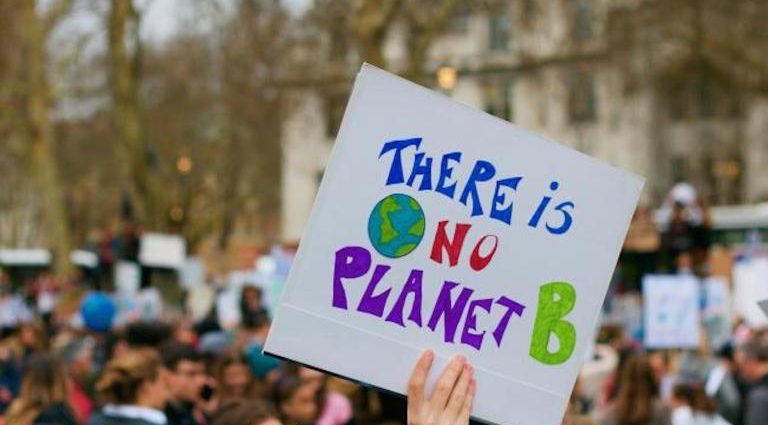
It is 28 years since the United Nations Framework Convention on Climate Change entered force, with the simple but fantastically complex ambition of “preventing dangerous human interference with the climate system.”
Since then, 198 countries have ratified the convention, and on Sunday their representatives will gather at Sharm El Sheikh, Egypt, for the 27th Conference of the Parties, or COP27.
With some 30,000 delegates flying in from all over the world, this will be among the largest climate-change conferences ever staged. But is there any point?
Last month, the UN Environment Program (UNEP) published its 13th Emissions Gap Report. Titled “The Closing Window,” it was in effect a scream of a wake-up call for every national delegation heading for Egypt.
Whether it will be heard or not will become apparent over the coming two weeks in Sharm El Sheikh.
“Every year,” wrote UNEP executive director Inger Andersen in her foreword to the report, “the negative impacts of climate change become more intense.
“Every year, they bring more misery and pain to hundreds of millions of people across the globe. Every year, they become more a problem of the here and now, as well as a warning of tougher consequences to come.”
The world is, she added, “in a climate emergency,” and yet “still nations procrastinate.”
At the end of October, a series of fresh reports confirmed that, despite all the hot air generated by COP after COP, the global climate crisis continues to get worse. Among the more sobering was the annual greenhouse gas bulletin from the World Meteorological Organization, which reported that atmospheric concentrations of carbon dioxide, methane and nitrous oxide all reached record levels in 2021, and have continued to rise this year.
There is, of course, the great puzzle of our time – how to maintain energy supplies while transitioning to renewables. But it is clear from depressing facts such as these that there is no serious concerted effort under way to solve it.
After the Paris Agreement in 2015, in which nations agreed on the goal of limiting global warming to well below 2 degrees Celsius above pre-industrial levels, nations submitted Nationally Determined Contributions, detailed commitments on how they planned to do their bit to help the world hit that goal.
Those NDCs were updated after COP26 in Glasgow and, after totting up the various pledges, UNEP has concluded that, quite frankly, they needn’t have bothered.
The problem is this. In setting out its plans, almost every country has failed to pull its weight, presumably in the hope of maintaining economic advantage while other nations step forward to bear a greater share of the necessary reductions in global emissions.
The result, says UNEP, is that there has been only very limited progress in reducing the “immense … gap between the emissions reductions promised and the emissions reductions needed to achieve the temperature goal of the Paris Agreement” by 2030.
The bottom line is this: To stand even the slightest chance of limiting global warming to the ideal 1.5 degrees Celsius increase identified at Paris, annual global greenhouse gas emissions must now be reduced by an astonishing 45% in just eight years.
Think about everything you do that contributes to greenhouse gas emissions – driving, flying, lighting, heating or cooling your home, watching television, operating the washing machine, and so on – and imagine doing 45% less of all those things by 2030.
Now imagine the country in which you live doing the same, reducing all transport, agriculture, energy production by the same amount.
This is a near-impossible target. And even if the world’s wealthy developed nations did start to invest more urgently and realistically in alternative energy, any emissions reductions they might achieve are going to be offset by emerging economies that are burning increasing amounts of fossil fuels as they strive to attain the same advantages that the West has enjoyed since the dawn of the industrial revolution.
Instead of the 45% reduction in emissions now necessary by 2030, even if every nation delivered fully on its existing NDC pledges, the total reduction in carbon emissions achievable by 2030 is a pathetic, all-life-on-earth-threatening 3.6%.
Clearly, commitment is lacking. At COP26, all 193 national parties to the Paris Agreement agreed to revise and strengthen their climate plans. The fact that only 24 have done so is, in the masterfully understated view of Simon Stiell, executive secretary of UN Climate Change, “disappointing.”
Speaking last week, Stiell added: “We are still nowhere near the scale and pace of emission reductions required to put us on track toward a 1.5 degrees Celsius world.”
It is hard to avoid the conclusion that pretty much every COP since 1994 has been little more than a festival of pledges, an opportunity for politicians to promise big on the world stage and deliver small back home.
But for now, and until the conclusion of COP27 on November 18, Egypt must be given the benefit of the doubt.
This week, in an interview with New Scientist magazine, Mohamed Nasr, Egypt’s chief climate negotiator, made a pledge of his own – that COP27 would be different, that it would be a “reality check,” putting pressure on countries to deliver on existing promises before making new ones.
We can all only wish him, and Egypt, the best of luck. If they manage to pull it off, and persuade reluctant nations that actions speak louder than words, then they will have earned the gratitude of the world, and of the future generations whose very existence hangs ever more precariously in the balance.
This article was provided by Syndication Bureau, which holds copyright.
Jonathan Gornall is a British journalist, formerly with The Times, who has lived and worked in the Middle East and is now based in the UK. Follow him on Twitter @JonathanGornall.

